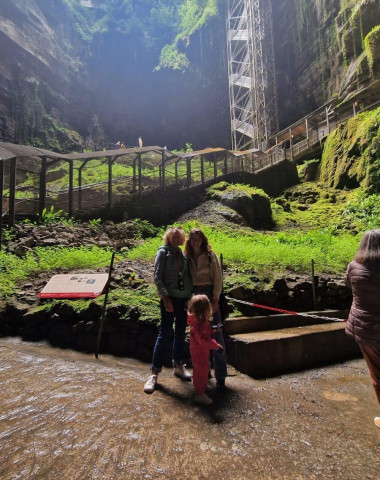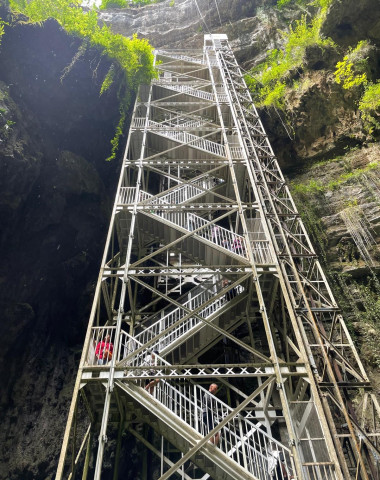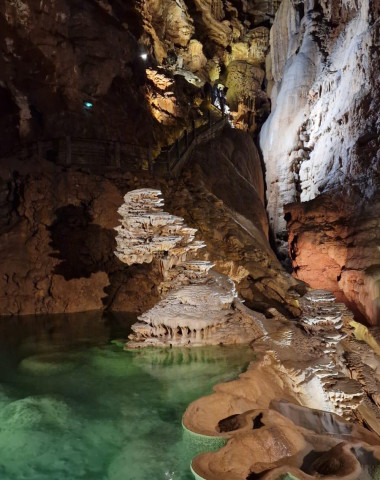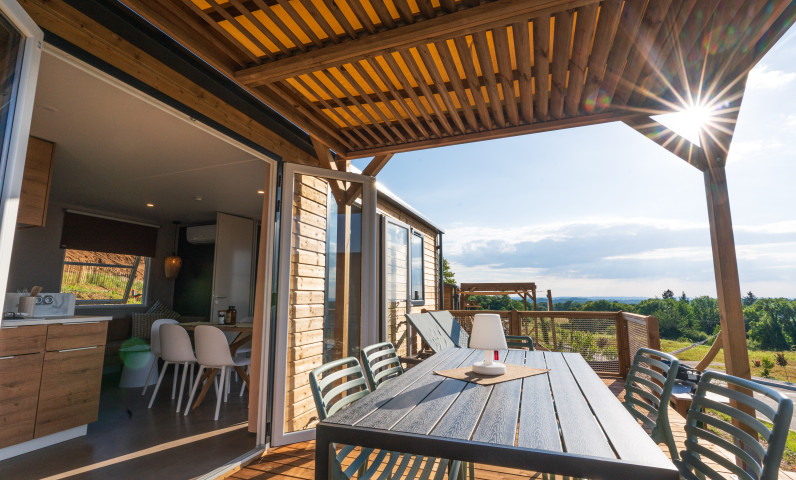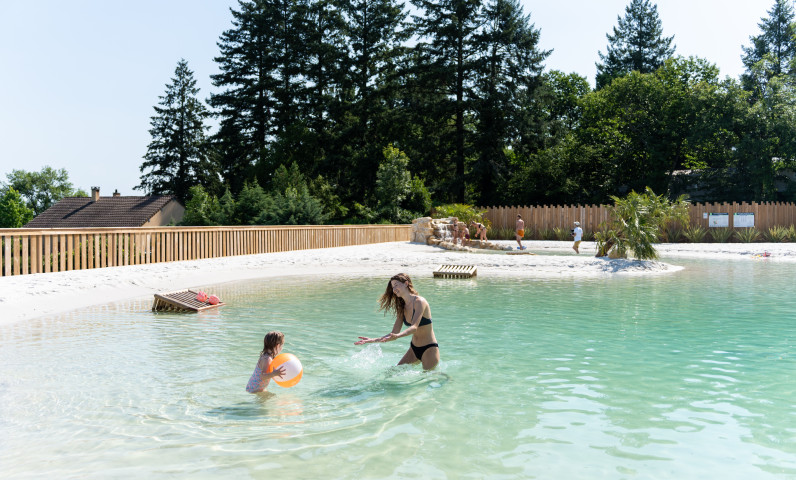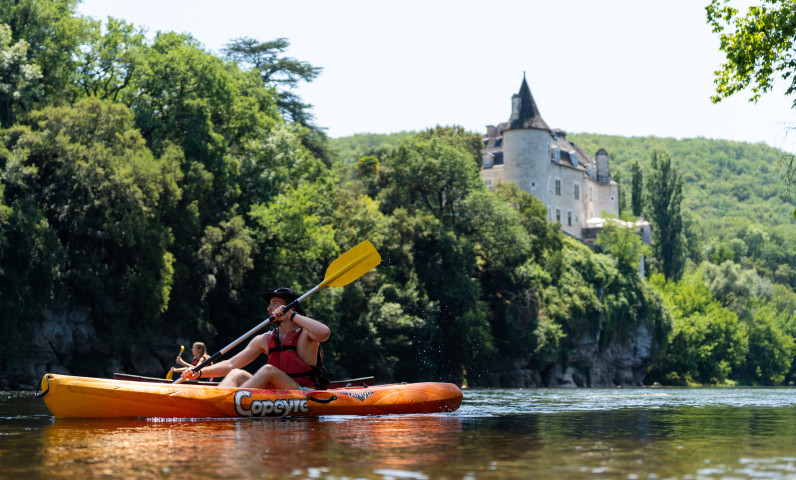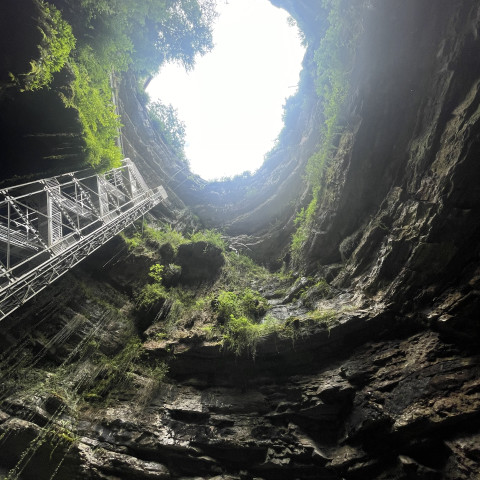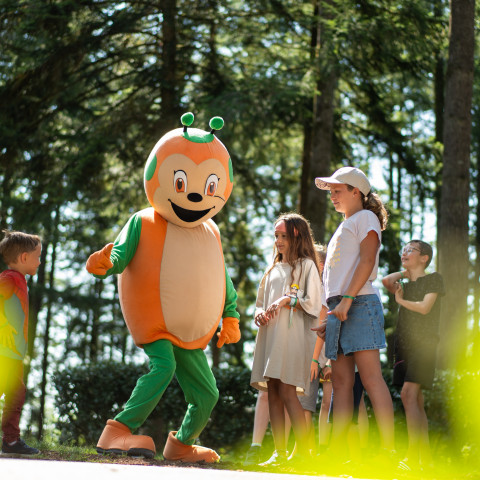Gouffre de Padirac: An Underground Gem in the Heart of the Lot Department
Located in the Lot department, within the Regional Natural Park of the Causses du Quercy (in the former Midi-Pyrénées region), the Gouffre de Padirac is among the most impressive and most visited caves in France. Every year, hundreds of thousands of visitors discover this underground world, complete with natural cavities, an underground river at the bottom of a giant cave, and stalactites and stalagmites forming magnificent draperies. Whether you’re into caving, a fan of prehistory, or simply curious, this deep chasm—over 100 meters deep—promises an extraordinary adventure.
By staying at Camping Le Séquoia, you’ll enjoy easy access to visit Padirac and explore other natural or cultural treasures in the region. Read on for everything you need to know to plan your visit: its history, practical information, highlights of the experience, and top sights in the surrounding valleys.
History and Discovery of the Gouffre de Padirac
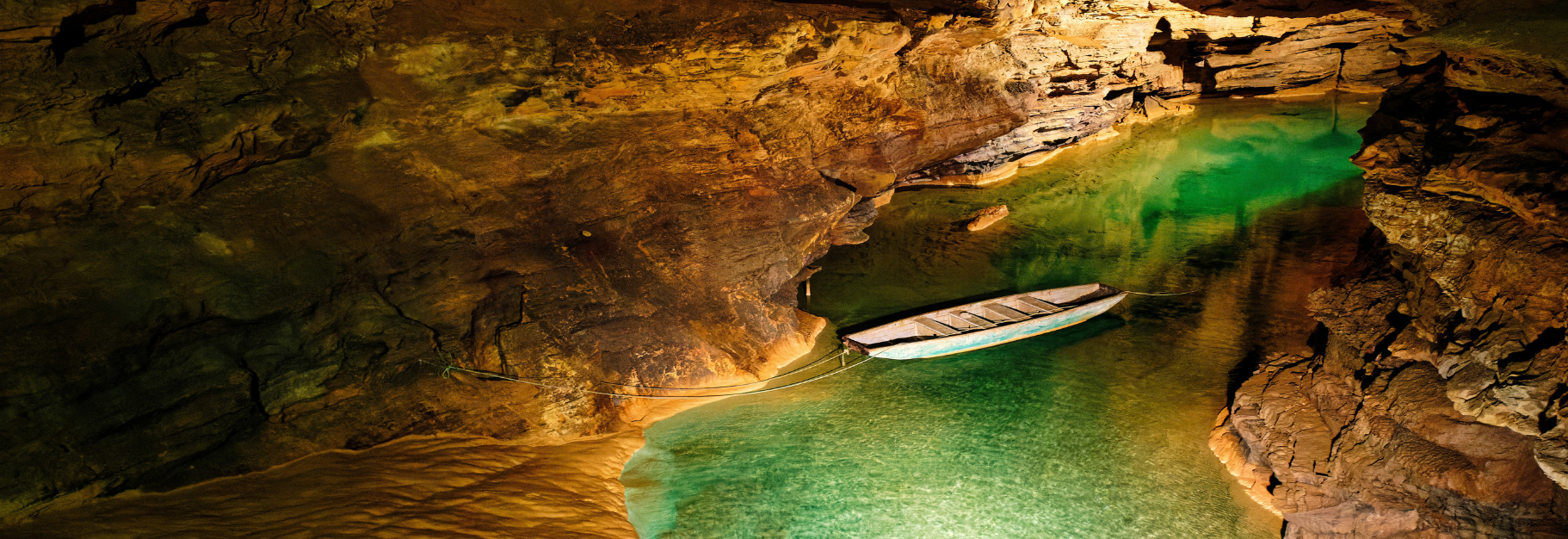
History and Discovery of the Gouffre de Padirac
Origins: When a Natural Cavity Becomes a Chasm
The Gouffre de Padirac is the result of limestone erosion in the Causses, which over millennia carved out caverns and natural cavities. Through successive collapses, one of these caves eventually became a chasm—a large natural shaft about 35 m in diameter and over 100 m deep, sometimes called the “Devil’s Fissure” by locals. Unlike certain caves decorated with prehistoric paintings, such as the Lascaux Cave or Pech Merle Cave, Padirac does not contain parietal art, but its geological features make it a unique treasure.
Édouard-Alfred Martel, the Visionary Caver
Modern exploration of this underground world began in 1889, led by famed caver Édouard-Alfred Martel, known as the “father of caving.” He was the first to descend more than 100 m below ground here. He found an underground river, giant chambers, and incredible mineral formations (stalactites, stalagmites, draperies, etc.), revealing the magnitude of this natural cavity. His caving exploits put the Gouffre de Padirac in the spotlight for both science and tourism.
Opening to the Public and International Renown
As early as 1898, the site was outfitted to welcome the public: staircases, walkways, guided tours by boat, and more. Over the decades, Padirac became one of the must-see spots to visit in the Lot department, alongside Rocamadour or Saint-Cirq-Lapopie. Today, it’s counted among the treasures of the region’s major natural heritage sites, and it continues to captivate families and seasoned cavers alike who come to study this chasm.
Frequently Asked Questions (FAQ) – Gouffre de Padirac
The Gouffre de Padirac is generally open from late March to early November, with longer hours during the summer season. Exact dates and times can vary each year, so be sure to check the official website or contact the local tourist office for the latest information.
Yes. It’s strongly recommended to book your tickets online, especially during school holidays and on weekends in peak season (July–August). This way, you’ll avoid long queues and secure your visit time slot.
A full tour of the Gouffre de Padirac takes about 1.5 to 2 hours, including the descent, the boat ride on the underground river, and the exploration of the various chambers (including the Grand Dome Hall).
The temperature inside the Gouffre de Padirac is constant, around 13°C (about 55°F) all year round, with high humidity. We recommend bringing a warm sweater or jacket and wearing non-slip shoes, even in the middle of summer.
The site has elevators and certain facilities to help visitors get around, but some areas may still be challenging for those in wheelchairs or with limited mobility. It’s a good idea to check with the Gouffre de Padirac or consult their official website for more details on accessibility.
Children are welcome. However, you should be aware that the descent, stairs, and the underground environment (cooler, darker) may be intimidating for very young kids. The boat ride is usually very popular with children, as long as safety guidelines are followed.
To protect the site and maintain a quality visitor experience, photography (with or without flash) is often regulated or prohibited in certain areas. Check on-site or consult the official website for the current policy.
The ticket office at the Gouffre de Padirac generally accepts credit cards and cash. Some places also allow you to buy e-tickets online. Make sure to verify accepted payment methods before you arrive.
A free car park is available near the site’s entrance. If you’re visiting during peak season, it’s best to arrive a bit earlier to find a spot and avoid crowds.
Yes, you’ll find a cafeteria/snack bar at the entrance to the Gouffre de Padirac, offering drinks, sandwiches, and light meals. For a wider variety of options, explore nearby restaurants and farm inns in the region to savor the local Quercy cuisine.
The region boasts plenty of other sites:
- Rocamadour: a medieval citadel perched on a cliffside.
- Grottes de Lacave: another well-known underground site with a small train.
- Camping Le Séquoia in Payrac: an ideal base for exploring the area, enjoying nature activities, cultural visits, and local gastronomy.
What to Do Around the Gouffre de Padirac? Other Caves and Caverns
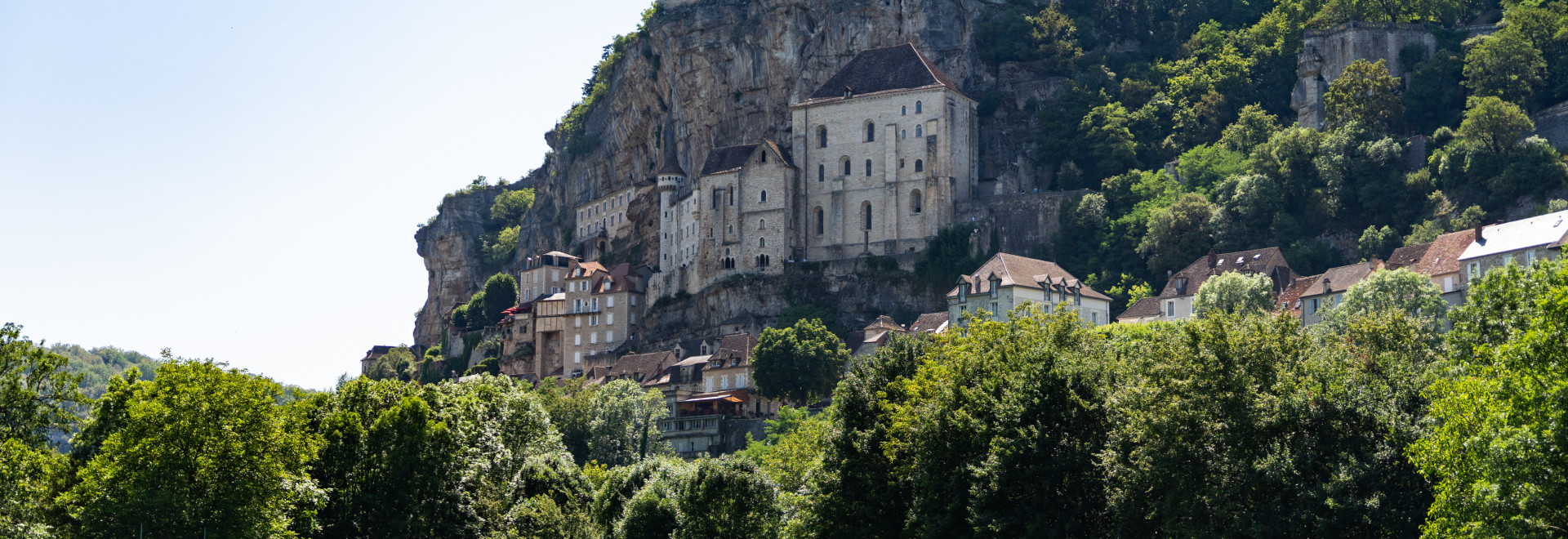
If you’d like to extend your cave tour, the region abounds with other natural cavities and remarkable sites:
- Pech Merle Cave: famous for prehistoric paintings, parietal walls, and a rich variety of figures (including spotted horses).
- Grottes de Lacave: accessible by a small underground train, revealing grand spaces and impressive formations.
- Gouffre Géant de Cabrespine (in Aude): another deep chasm worth seeing if you’re heading further south.
- Grotte de Choranche (in the Vercors): though farther away, its slender stalactites and stalagmites and crystal-clear waters are a wonder of French caving heritage.
In neighboring Périgord, the Vézère Valley is home to many prehistoric caves, including the famous Lascaux Cave—listed as a UNESCO World Heritage Site—a testament to Cro-Magnon man’s existence.
Gouffre de Padirac, an Unmissable Destination in the Causses du Quercy
The Gouffre de Padirac stands out as one of the most stunning examples of the underground world in France, a deep chasm that’s been captivating visitors and cavers for over a century. Between subterranean rivers, stalactites and stalagmites, calcite draperies, and a timeless atmosphere, it’s guaranteed to enchant you.
When you choose Camping Le Séquoia as your base, you’ll have comfortable accommodations from which to explore Padirac and the many treasures of the Causses du Quercy: châteaux, listed villages, valleys, and prehistoric caverns.
Ready for a unique experience? Book your stay today and set off to explore the Gouffre de Padirac, a must-see in the Lot that will leave you in awe.

